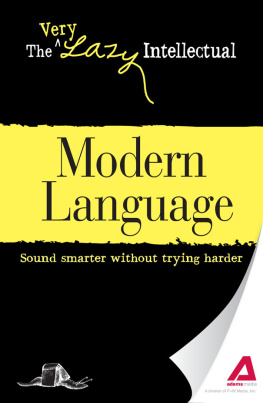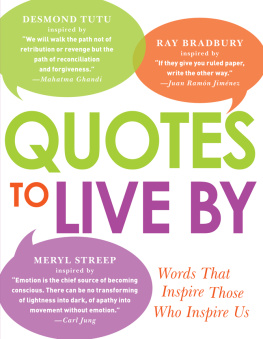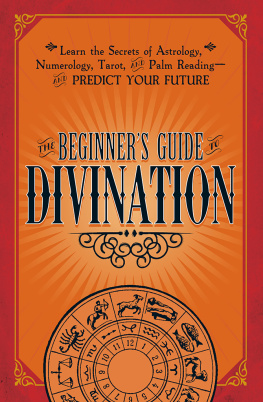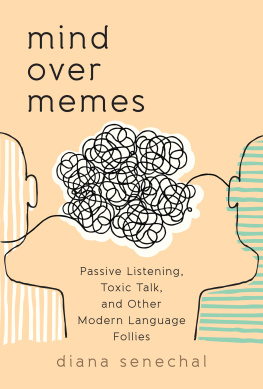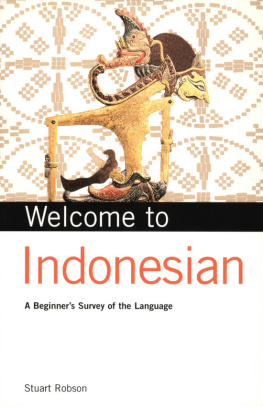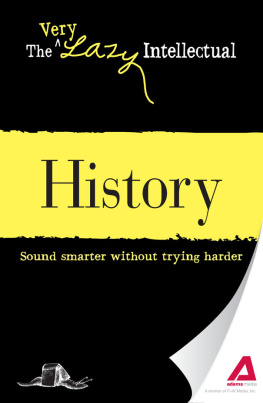The Very Lazy Intellectual
Modern Language
Adams Media, a division of F+W Media, Inc.
Avon, Massachusetts
Contents
Introduction
If we were to look up the term lazy in a dictionary, we might expect to find some unflattering connotations. Lets skip over such definitions as adverse or resistant to work, slothful, and sluggish, and adopt a more positive, charitable perspective. If instead we consider lazy as economical or avoiding waste, we get a much better picture of the idea behind The Very Lazy Intellectual series.
This series of books is a set of short, economical references full of the fundamental knowledge you need to know to sound as if you really know something about a particular academic subject. The Very Lazy Intellectual: Modern Languages lays out the indispensable facts, sample words and phrases, and fascinating elements of the worlds most commonly spoken languages to build your knowledge foundation.
Whether you want to refresh your memory of a long-since forgotten course, or merely wish to be able to say something intelligent about or in another language, this book will help. Enjoy the low-effort scholarship of The Very Lazy Intellectual: Modern Languages .
If youd like to learn more about modern languages and more, check out The Lazy Intellectual , available in print (978-1-4405-0456-3) and eBook (978-1-4405-0888-2) formats.
American Sign Language
American Sign Language (ASL) is a complete and complex language that uses hand signs and other movements, including body postures and facial expressions, for communication. It is the first language of many deaf people in North America.
Other than its means of expression, sign language resembles spoken languages in every way. This includes the lack of a universal sign language; even ASL and British Sign Language are so different as to be mutually unintelligible. This situation also demonstrates that sign languages are not dependent on oral languages but have developed on their own.
The exact origin of ASL is not clear. French Sign Language was brought to this country in 1817 and used in the first school for the deaf in the United States, the American School for the Deaf in Hartford, Connecticut. As a result, ASL and French Sign Language share a large vocabulary but despite this are mutually unintelligible.
Fast Fact
In oral languages, only one sound can be made at a time, so complex ideas require longer and more complex phrases. In sign language, several meanings can be expressed simultaneously through variations in hand and body movement and facial expression.
American Sign Language uses hand shape, movement, and position; body movements; gestures; facial expressions; and other visual cues to form words. The complexity of ASL requires years of study and practice for mastery. Like all languages, ASL contains rules for grammar, punctuation, and syntax. And like all languages, ASL evolves with its users and varies regionally and in its use of jargon and expression.
A deaf child who is born to deaf parents who already use ASL will acquire ASL as naturally as a hearing child picks up spoken language from hearing parents. However, a deaf child with hearing parents who have no prior experience with ASL will acquire language differently. This is important because 90 percent of children born deaf are born to parents who are not.
Person of Importance: Thomas Gallaudet
Thomas Gallaudet (17871851) was born in Philadelphia and originally intended to become a minister. He graduated Yale with a degree in education and was asked to teach the deaf daughter of the family doctor. His interest in the special needs of deaf students led him to establish what would become the American School for the Deaf, the first of its kind in the United States.
Because sign languages have a high level of complexity, requiring fingers, hands, and the face or body to often move simultaneously, sign languages are not often written. In most developed countries, deaf signers learn to read and write their countrys oral language. However, there have been several attempts to develop a written sign language. In 1965, William Stokoe published A Dictionary of American Sign Language on Linguistic Principles that uses a notation system of letters, numbers, and symbols. The Hamburg Notational System, HamNoSys, and SignWriting were developed later and are phonetic systems that can be used for any language.
Arabic
Arabic is a member of the West Semitic group of the Semitic subfamily of the Arfoasiatic family of languages. Arabic is the language of the Quran (Koran), the holy book of Islam, and is used widely throughout the Muslim world. It is the mother tongue of more than 180 million people. Classical Arabic, the form used in the Quran, has been standardized for use as a written language throughout the Arab world. There are many spoken dialects broken into three principal groups, some of which are mutually incomprehensible.
Fast Fact
Prior to the seventh century, Arabic was limited primarily to the Arabian Peninsula. It spread to the Fertile Crescent and North Africa. Today Arabic is spoken in the Arabian Peninsula, Iraq, Syria, Jordan, Lebanon, Israel, and the African nations of Mauritania, Morocco, Algeria, Tunisia, Libya, Egypt, Sudan, and Chad.
Like other Semitic languages, such as Hebrew, Arabic uses a root system that consists of three consonants separated and surrounded by vowels. The consonant root conveys an idea the consonants k-t-b convey the idea of writing, for example and the addition of vowels produces related words such as book , library , and office. Nouns, verbs, pronouns, and adjectives have gender. Arabic has very few irregular verbs and does not use the present tense of the verb to be. Normally the verb occurs at the beginning of a sentence.
The Arabic alphabet contains twenty-eight consonants and three vowels. Most of the characters have different forms depending on where they appear in a word. The vowels are indicated by symbols above or below the consonants, but these are optional and infrequently used.
Fast Fact
The Arabic numeral system was first conceived in India, was passed to the Islamic world, and then to Europe in the tenth century. They are referred to as Arabic numerals because Arabs in North Africa transmitted them to Europe.
The sounds used in Arabic are very different from those of English and European languages; some are unique. There are a number of distinctive guttural sounds and others requiring changes in the shape of the pharynx and tongue that are unnatural for non-native Arabic speakers.
While Arabic has borrowed very few words from English, it has lent many. English words of Arabic origin include: alcohol , algebra , coffee , guitar , jar , mattress , orange , and sugar .
Bengali
Bengali is a member of the Indo-Aryan group of the Indo-Iranian subfamily of the Indo-European family of languages. It is native to an eastern South Asian region known as Bengal, which includes Bangladesh, the Indian state of West Bengal, and parts of the Indian states of Tripura and Assam. More than 210 million people speak Bengali as a first or second language with about 100 million in Bangladesh, about 85 million in India, and large immigrant communities in the United Kingdom, the United States, and the Middle East. It is the official language of Bangladesh.
Like Hindi, Bengali descended from Sanskrit. Since 1800, the language has been simplified somewhat by the shortening of verbs and pronouns and other changes. Today there are two literary styles: Sadhubhasa is the older form, and Chaltibhasa is the simplified, current form.

